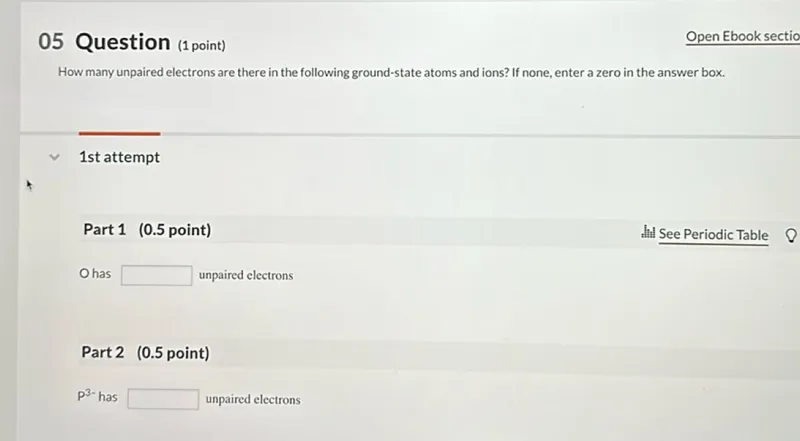Questions: How many unpaired electrons are there in the following ground-state atoms and ions? If none, enter a zero in the answer box. O has unpaired electrons P3- has unpaired electrons

Transcript text: How many unpaired electrons are there in the following ground-state atoms and ions? If none, enter a zero in the answer box.
O has $\square$ unpaired electrons
$\mathrm{P}^{3-}$ has $\square$ unpaired electrons





